The Colosseum Archaeological Park concludes the enhancement of the Rain Nymphaeum, reopened to the public last October, with an exhibition tracing the significance of the nymphaeum and the history of the Farnesian Gardens. Entitled Farnesian Splendors. The Rediscovered Rain Nymphaeum, the exhibition runs from Dec. 12, 2023, to April 7, 2024, is curated by Alfonsina Russo, Roberta Alteri and Alessio De Cristofaro, and is designed to offer visitors a reconstruction of what were the values, meanings and uses of the Nymphaeum and all of the Farnesian Gardens at the time of their heyday, between the second half of the 16th and 17th centuries: an ideal journey into the ephemeral and intangible Baroque culture that characterized the famous Farnesian gardens, theater of delights, research, ceremonies and political self-representation of one of the most important Italian families of the time.
Through paintings, drawings from antiquity, prints, bronze sculptures, art objects and innovative digital apparatuses, the exhibition aims to allow visitors to immerse themselves in the life and atmosphere of the time, approaching not only the history of the Orti and the Farnese, but the very mentality and worldview that characterized the Roman and Italian aristocracy between the late Renaissance and the 17th century. In designing the exhibition, special effort was devoted to the recovery of documents and works that had a direct relationship with the Nymphaeum, the Orti and the Farnese family. By directly setting up the different sections of the exhibition inside the palatial garden buildings themselves, the chosen works dialogue and integrate with the spaces.
“Reconstructing in a philological way and recounting the ephemeral and intangible heritage of a concluded era is never easy,” comments Alfonsina Russo, director of the Colosseum Archaeological Park. “Careful research work that brings together the documents, texts, monuments and objects that constitute historical evidence of a given era is always necessary. Then the challenge of storytelling must be faced, in forms that must be accessible and understandable to all, but without simplifying or trivializing. In this, PArCo invests heavily in innovation, thanks to experimentation and the use of multimedia and storytelling techniques.”
“The choice to set up the works in the Nymphaeum of the Rain and in the Uccelliere,” says Roberta Alteri, “restores the original sense and functions of these spaces, which today are not easy for visitors to perceive. The Nymphaeum was a place for feasts and delights designed by Rainaldi as a multisensory space, where guests could satisfy themselves through banquets, music, images and the pleasant presence of water in the form of simulated rain. The Uccelliere a kind of microcosm of the distant and then newly explored and known worlds.”
In addition, Farnese Splendors, in meeting the challenge of bringing visitors closer to the mentality of an era, so different from today, intends to respond with a multimedia installation that aims to virtually recreate the effect of a Wunderkammer. “The Wunderkammer, or Chamber of Wonders, is the quintessence of the aristocratic mentality and worldview in the 16th and 17th centuries,” explains Alessio De Cristofaro. “In it, objects from the natural world, archaeology, scientific instruments, fossils and curiosities are juxtaposed by analogy and metaphorical connection to reconstruct a mental map of the cosmos. The multimedia set-up, however, is not a precise reconstruction of it, but rather a tool intended to arouse in the visitor those feelings of curiosity, awe, wonder and attraction for the exotic and unusual that were typical of the period.”
The exhibition, which is on loan and in collaboration with leading national public and private museum institutions, will be open and can be visited every day, except for free Sundays, with hours of 9 a.m. to 4 p.m. (last admission 3:45 p.m.). Accompanying the exhibition is a catalog published by Palombi Editori that details new research on the Rain Nymphaeum and the more general historical and cultural significance of the Farnese Gardens.
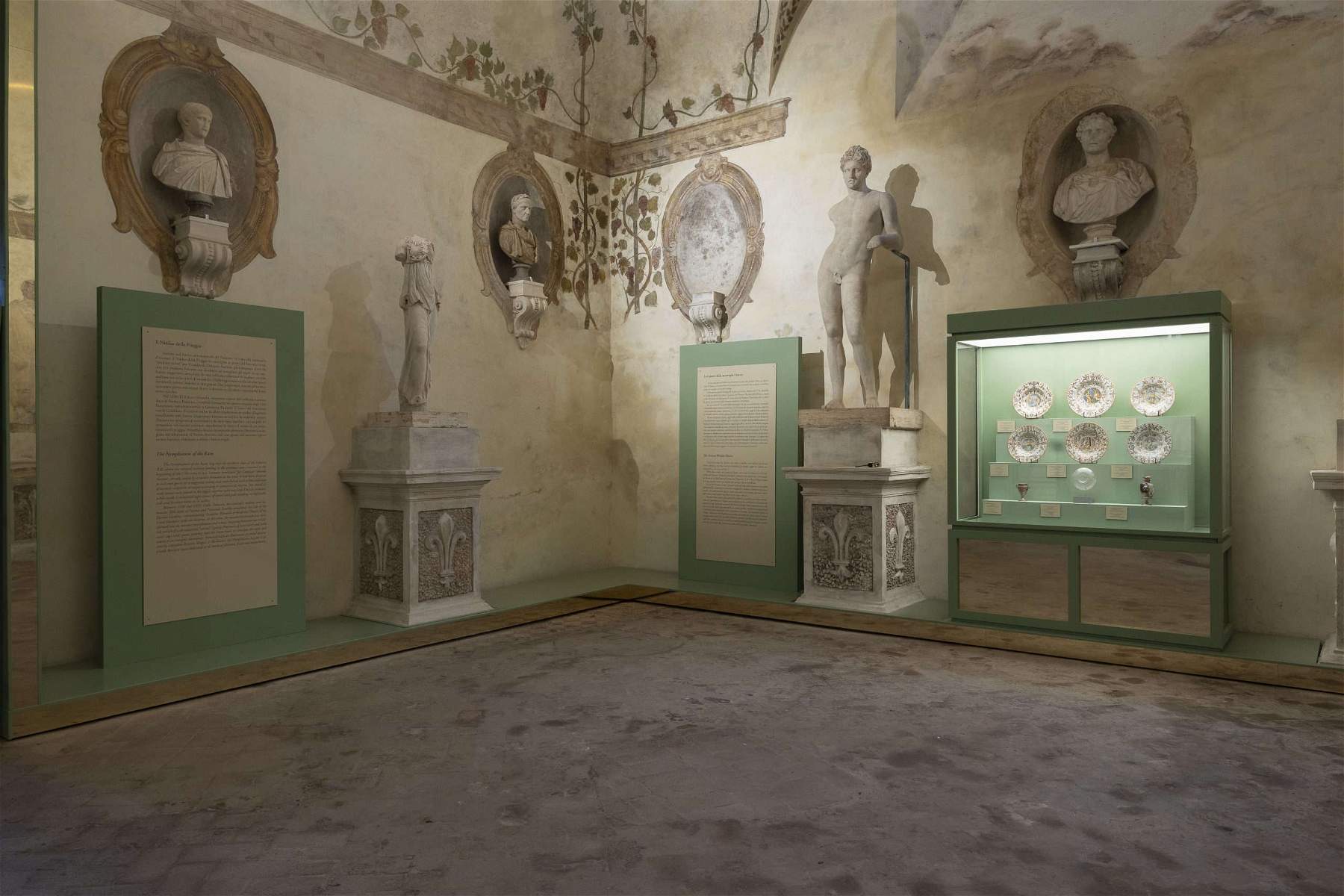
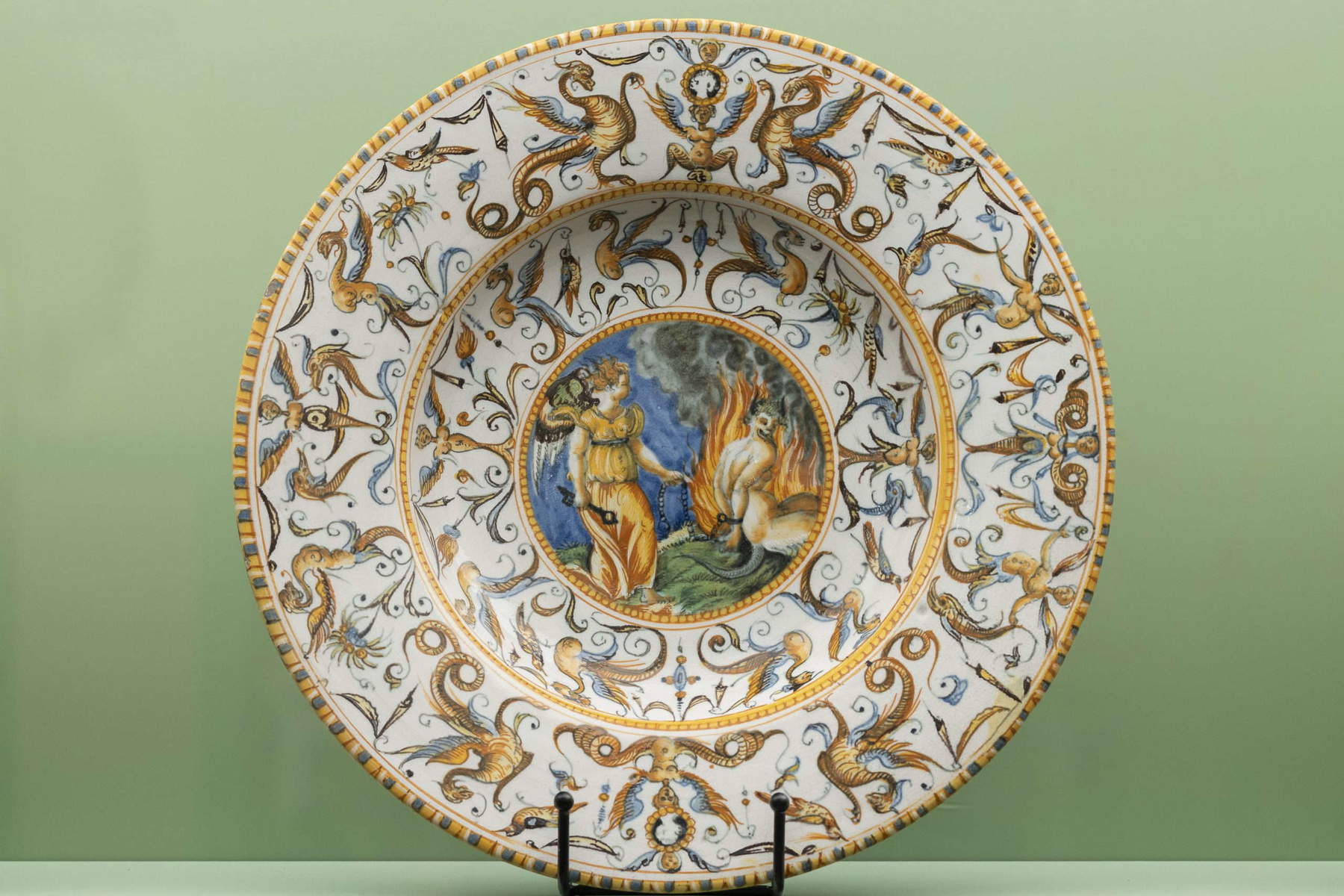
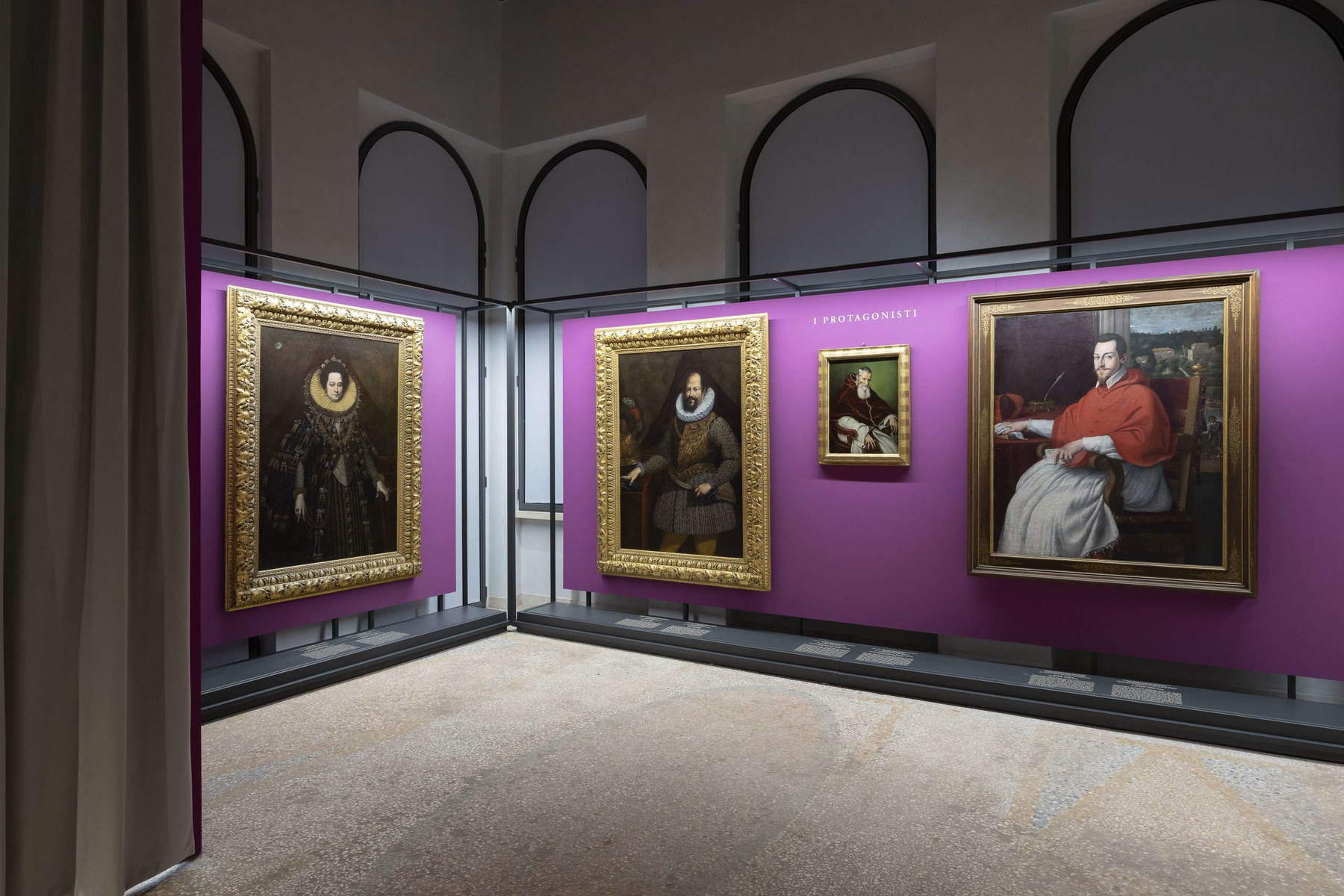
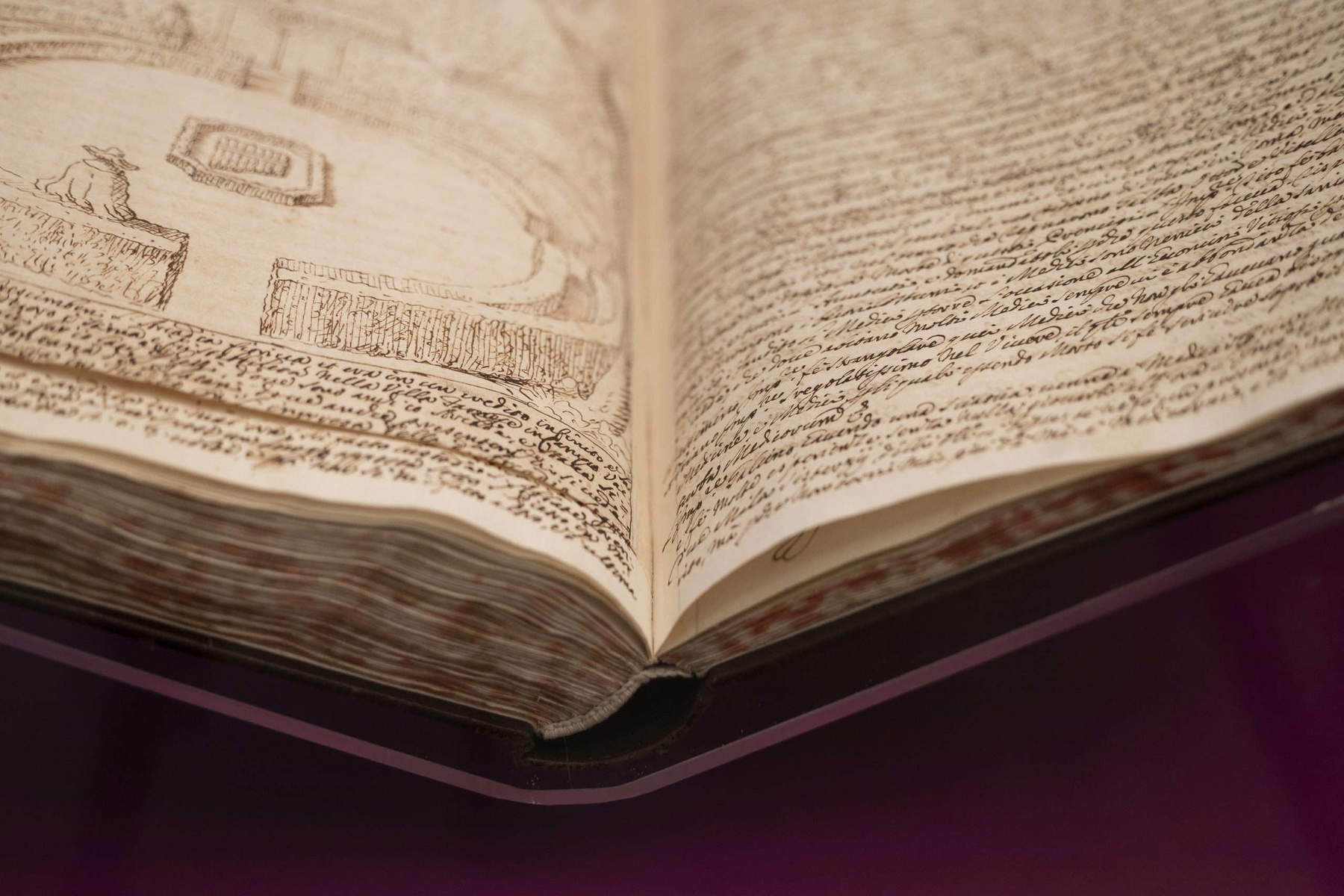
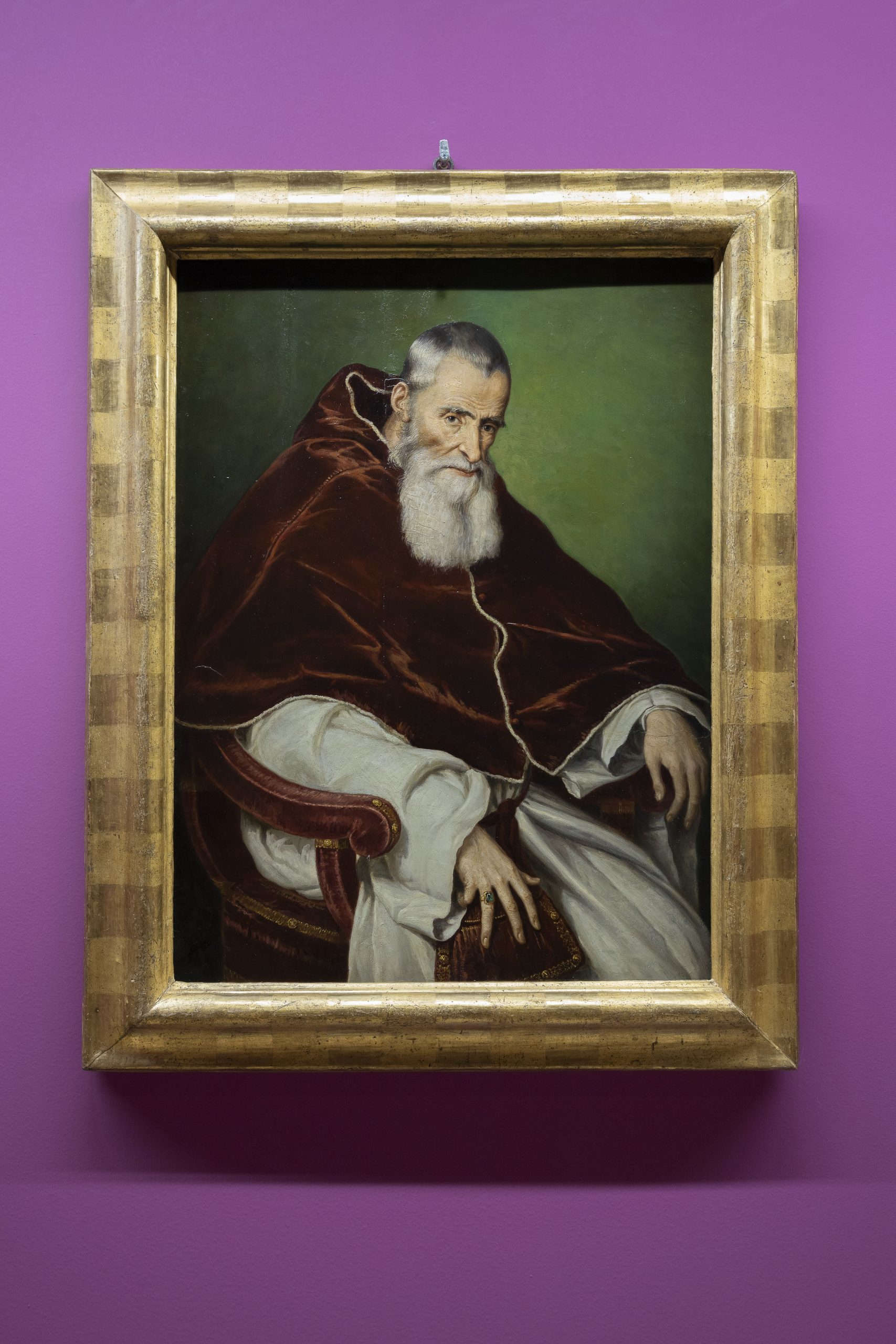
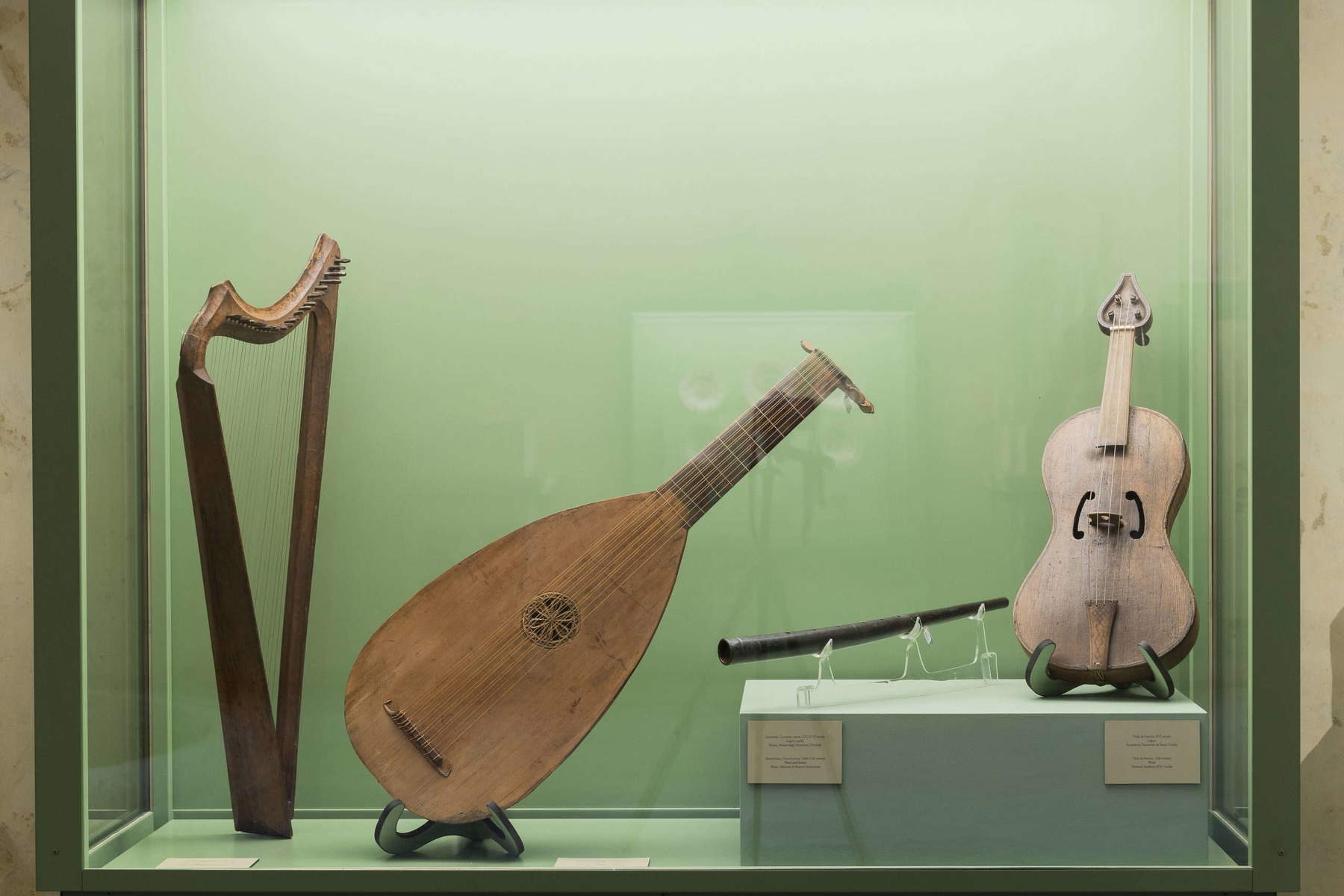
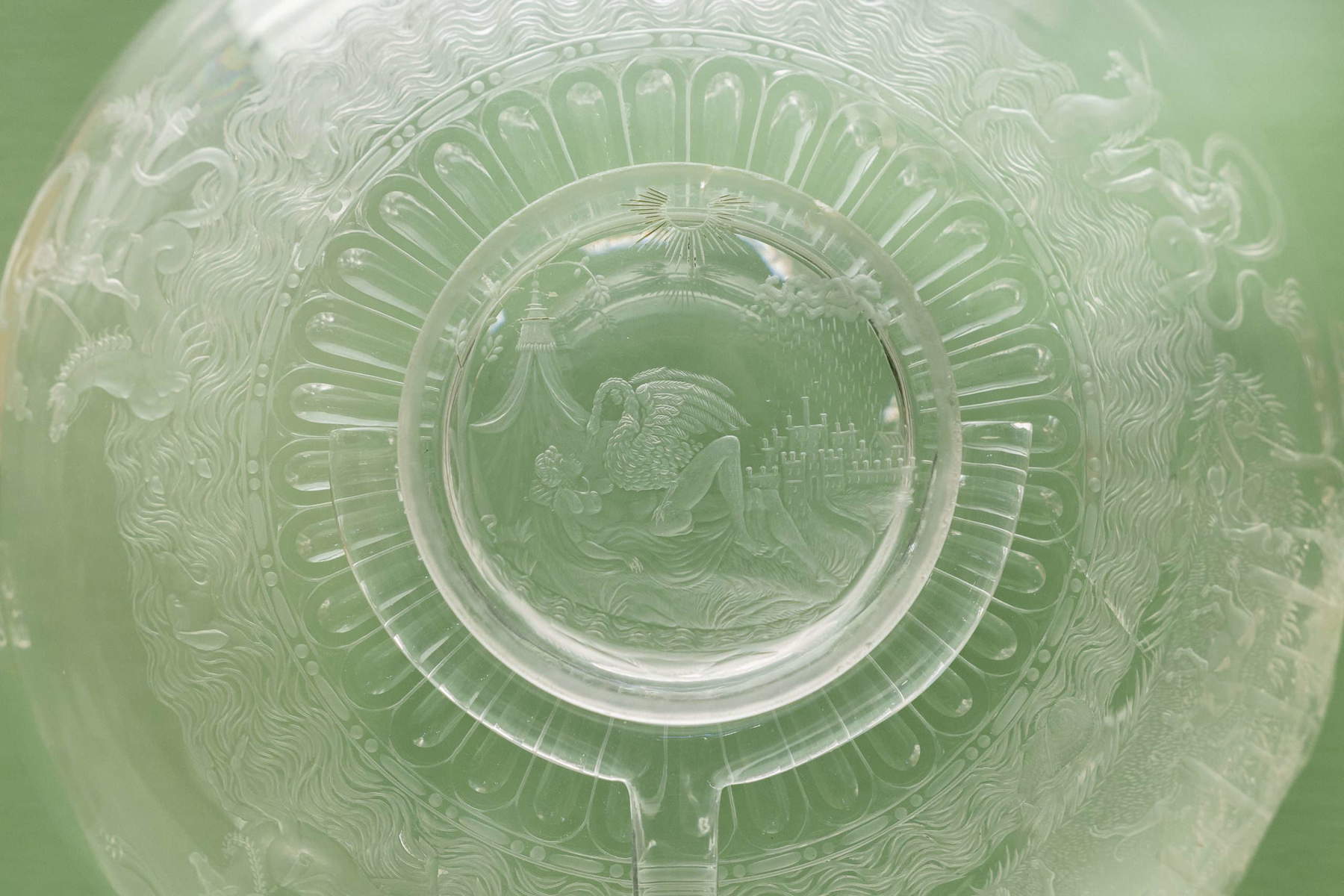
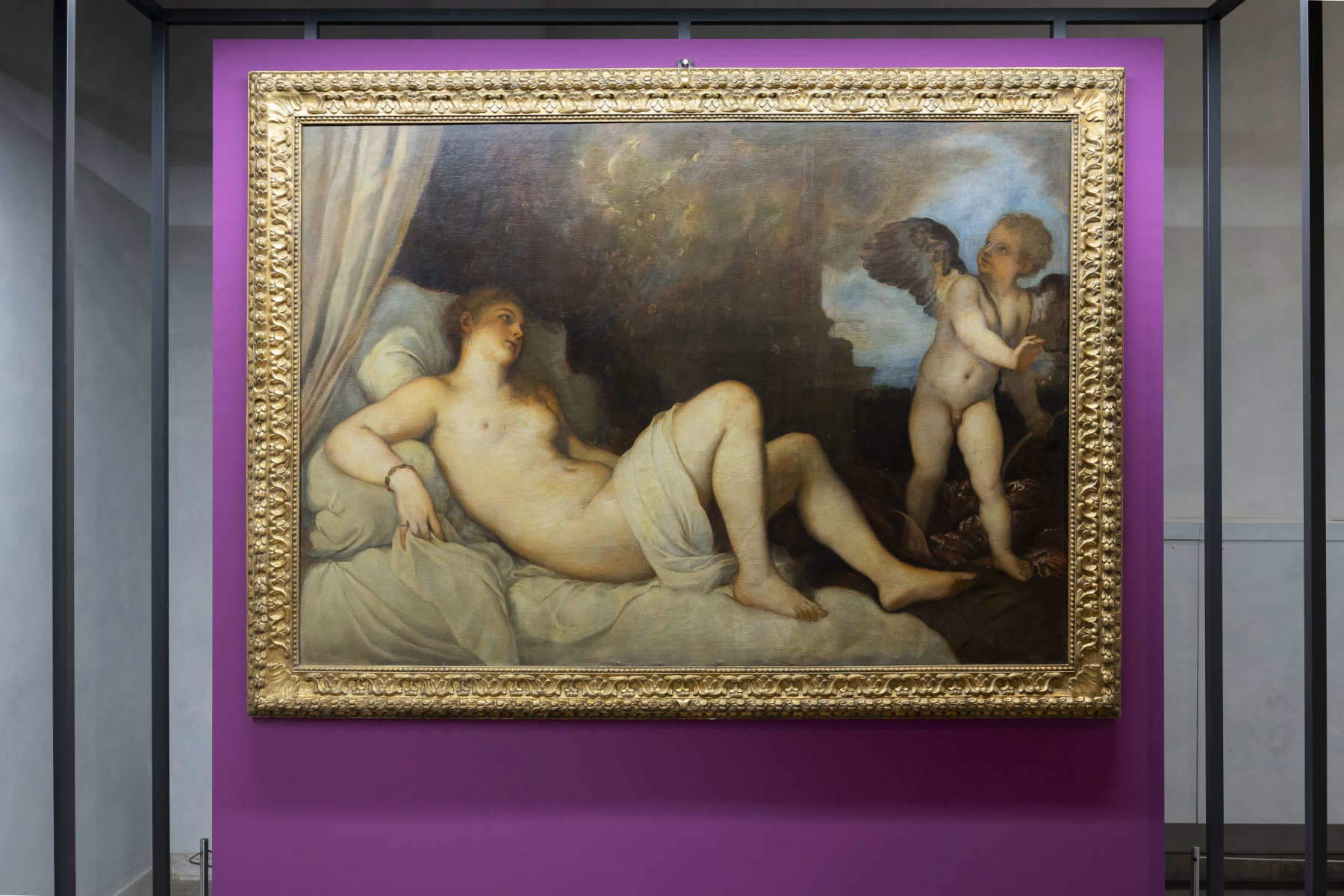
A garden is “an expression of the artistic consciousness of this or that era, of this or that country,” which can be read as a great hypertext made of nature, artifice, architecture, primordial elements, art and living creatures. The Horti Palatini Farnesiorum testify, with their long history and evolving appearance, to the culture and worldview of the Farnese family between the 16th and 17th centuries, representing their ambitions, interests, ideality, and daily life.
The exhibition recounts the symbolic meanings and uses of the Farnese Gardens, reconstructing through works of art, objects and multimedia apparatus, all that ephemeral and immaterial that Time has erased.
In the Nymphaeum of the Rain, a Baroque space par excellence in the gardens, festivities and delights are evoked, accompanied by banquets, music, dancing and the illusion of being in a pergola refreshed by the melodious downpour of rain.
In theUccelliera on the right are portraits of the main protagonists of the Farnese family and a number of works illustrating the culture and ideal origins of the Orti, while in theUccelliera on the left a multimedia installation proposes, in the forms of a modern wunderkammer, the themes of science, the exotic and the wonder of the Baroque age, declined in the Farnese world. Completing the exhibition is the philological reconstruction of the famous Botanical Garden curated by Tobia Aldini, which, after four hundred years, thus comes back to life on the Palatine.
The first is entitled Nymphaeum of Rain. Functions and Meanings and is dedicated to this very site, carved into the northern flank of the Palatine, at the top of the access cordonade. The Rain Nymphaeum was conceived in the early seventeenth century as a “summer triclinium” for Cardinal Odoardo Farnese: already refreshed at the time by a more modest fountain, it was intended to welcome guests in an evocative environment, enriched by a refined collection of ancient sculptures arranged according to criteria of symmetry. Two seated female statues were placed in the loggia, along with the two large captive Dacians , while inside were eight statues of heroes and gods on high plinths and fourteen busts within niches. The statues symbolized themes and speeches typical of the culture of the time: love, good health, heroic values, and the exemplary lives of the ancients. In 1630-33 Duke Odoardo, the cardinal’s namesake nephew and fifth duke of Parma and Piacenza, lavishly completed this side of the Farnese Gardens, commissioning Girolamo Rainaldi to build the Teatro del fontanone with the Uccelliere. The summer triclinium was then transformed into an entrance nymphaeum, installing an imposing new fountain enriched with stalactites, tartari (spongy fragments of travertine) and seven stone cups whose gushes, pouring into the lower basin, simulated the sight and sound of a lively downpour. Enriched by an illusionistic pictorial decoration executed by Modanino, the Nymphaeum thus became a space with a typically Baroque character, intended for delights, parties and amusements.
The transformation of the summer triclinium into the Nymphaeum of Rain left the sculptural collection unchanged, only restored by Francesco Rondone, while it entailed the creation of a new pictorial apparatus. Giovan Battista Magni known as Il Modanino (1591/92-1674), already at work on the exterior graffito decorations, painted at the apex of the ceiling a frame with Farnese emblems, within which a bold perspective breakthrough fakes the opening, from the upper terrace, of a large room, surrounded by balustrades and shaded by a pergola full of clusters and multicolored birds: from there faces anensemble of six musicians intent on playing. Visual deception thus also became acoustic deception, suggesting the sound of human music while enjoying the natural music of the fountain in an immersive multisensory experience.
The game of simulations also extended to the walls, where tall vine shoots, rising from the corners, created a green backdrop to the statues, almost as if they were placed outdoors, while rich foliage and birds also populated the vaults of the loggia and access stairs. The Nymphaeum thus offered guests a chance to immerse themselves in a space that provoked wonder, curiosity and pleasure.
The exhibition, in this section, also displays works from the Farnese Chamber of Wonders, in which naturalia and mirabilia, works of art and nature, were kept, with the intention of arousing wonder, surprise and admiration, rare and precious objects made of crystal, ivory, horn, precious stones, goldsmithing objects, bronzes, ambers, were stored in ten large cabinets. Some of these works, now in the collections of the Capodimonte Museum and Real Bosco, as mentioned are displayed in the exhibition, bearing witness to the ephemeral and intangible culture of the Farnese family: precious objects, such as the Agate Jug and the Rock Crystal Cup, obtained by working a single block of mineral with great mastery and technical skill, or the Urbino Majolica Dishes decorated in Raphaelesque style, made with a ceramic impasto that was highly prized and used on royal tables because it was believed not to alter the flavor of food. Or, finally, two artifacts carved from coconut, such as the biansata chocolate cup, which testify to the Farnese family’s collecting interest in objects of curiosity of exotic origin.
The second section, set up in the right Uccelliera, is entitled The protagonists and the inspiration for antiquity. Here are the main personalities of the Farnese family, evidenced by important paintings from public and private museum collections. We begin with Cardinal Alessandro Farnese, later Pope Paul III (Canino, 1468 - Rome, 1549). The son of Pier Luigi Farnese and Giovannella Caetani, a humanist and patron of the arts, he ascended to the papal throne in 1534. Although marked by nepotism, his pontificate was distinguished by the renovatio Urbis project and the spread of the humanae litterae. He approved the creation of the Society of Jesus and established the Congregation of the Holy Office. On the political and diplomatic level, he worked for peace among Christian princes and reform against Protestantism. In April 1536 he met Emperor Charles V in Rome, and in 1545 he convened the Council of Trent. He was buried in St. Peter’s Basilica in the Vatican in a special monument by Guglielmo della Porta. The second personage is Ranuccio I Farnese (Parma, 1569 - 1622). Son of Alessandro Farnese (1545-1592) and Maria d’Aviz of Portugal he was the fourth duke of Parma and Piacenza. A humanist by training, among other positions he was captain general of the imperial army in the Thirty Years’ War. He took Margherita Aldobrandini, great-granddaughter of Pope Clement VIII, as his wife. On May 7, 1600, the pope celebrated the wedding in the Sistine Chapel. Annibale Carracci re-enacted the event in the famous Triumph of Bacchus and Ariadne in the Galleria di Palazzo Farnese in Rome. He contributed to the prestige of the Farnese family with the institutional renewal of the Duchy and through works of artistic and cultural patronage. We then make the acquaintance of Margherita Aldobrandini (Duchy of Castro, 1588 - Parma, 1646). Daughter of Gian Francesco and Olimpia Aldobrandini, niece of Cardinal Ippolito, later Pope Clement VIII. After lengthy negotiations for marriage to Duke Ranuccio I Farnese, the agreement was sealed thanks to a very high dowry. The wedding was remembered by artists and poets, even in allegorical form and in collections of madrigals, poems, and epithalami. Emblematic celebrations of Baroque ephemera, typical of modern courts, took place in ducal cities. When Ranuccio I died, the designated heir, Odoardo, was only ten years old, so the government was given to Cardinal Odoardo and Margherita, from 1626 the sole regent of the Duchy of Parma and Piacenza. Fourth character is Odoardo I Farnese (Rome, 1573 - Parma, 1626). Great-grandson of Cardinal Alessandro Farnese the Younger (1520-1589), younger brother of Duke Ranuccio I, he became an early cadet and member of the Holy College. In Rome his tutor was the antiquarian Fulvio Orsini. He was appointed cardinal in 1591 by Pope Gregory XIV. From the Farnese he inherited not only possessions and fluctuating fortunes, but also patronage and artistic sensibility. He died at the age of fifty-three and was buried in Rome in the Gesù church next to his great-uncle Alessandro, the “great cardinal.” In his will he named his nephew Duke Odoardo as universal heir and stipulated that the artistic collections and library should remain in Rome, with the sole exception of the picture gallery that could be transferred to Parma. Fifth and last personage was Odoardo Farnese (Parma 1612 - Piacenza 1646). The second son of Ranuccio I Farnese and Margherita Aldobrandini, he was the fifth duke of Parma and Piacenza and the sixth duke of Castro. In 1628 he acquired full ducal powers and married Margherita de’ Medici, daughter of the Grand Duke of Tuscany Cosimo II de’ Medici. His political action was ruinous: he made a secret understanding with France, perfected by the Treaty of Rivoli (1635), but was defeated by the Spanish and saved through the mediation of Urban VIII and his brother-in-law Ferdinand II de’ Medici, whom his sister Margherita had married in 1628. He tried in vain to propose the invasion of Naples to the pontiff, who during the Castro War of 1642 excommunicated him. He died in 1646 at only thirty-four years old.
In the Uccelliera itself two other sections testify to the roots and inspiration to the Antiquity of the Or ti and the use of the gardens as a space for artistic and literary performances. In fact, the ideal origin of the Farnese Gardens stems from the Farnese family’s desire to symbolically refound the Palatine, to reconnect with the ideal and exemplary roots of Antiquity. The first significant act in this sense are the great works commissioned by Paul III Farnese for the ceremony of the Triumph of Charles V in 1536, which redesigned the appearance of the Forum and the heart of the ancient city. But all the Orti are conceived on the basis of inspiration from the Ancient. Even the Summer Triclinium-Ninfeo della Pioggia depends on a type of residential building elaborated in the early Renaissance on the basis of the rereading of classical sources and the study of ancient monuments, and in particular of the famous Nymphaeum of Egeria in the Caffarella Valley. It was precisely the Nymphaeum of Egeria that hosted the banquet for Charles V that preceded his triumphal entry into the city, being repurposed, on a probable design by Baldassarre Peruzzi, as a grotto open to the landscape and enlivened by water features. On display, a drawing by Antonio da Sangallo the Younger and a famous print by Giambattista Piranesi testify to the fortune of this monument for the history of Renaissance and Baroque architecture.
Since their establishment in the second half of the 16th century as a “garden of delights,” the Orti Farnesiani hosted parties, pastimes and cultural activities organized by members of the Farnese family and their entourage for a small and controlled number of guests. Over time, its vocation as a private cultural space where performances made up of music, verse, dancing and acting were staged away from prying eyes was thus consolidated. Even after the court moved to Parma, the Orti remained an important cultural space. In 1693, thanks to the authorization of the Duke of Parma, the Accademia dell’Arcadia, recently established at the instigation of Giovanni Vincenzo Gravina and Giovanni Mario Crescimbeni, moved to the Palatine. The Academy had set itself the goal of re-founding literary taste after the excesses of Baroque culture, with a return to the classical measure of which the claimed descent from the shepherds of the homonymous rural region of Greece, Arcadia, was the manifesto. On the Palatine, the poet-shepherds obtained to build a theater of wood and earth, decorated with laurel plants. Their stay, however, was short, because for the irreverence and salaciousness of some of the verses they were soon expelled by their host. Pier Leone Ghezzi’s rare drawing in the exhibition illustrates this brief stay of the Arcadians in the Farnese Gardens.
The third section, in the left Uccelliera, is entitled The Wunderkammer. Like all the great houses of Europe, the Farnese had formed a “chamber of wonders” that, by collecting naturalia, mirabilia and artificialia, illustrated their collecting and scientific interests, with a view to representing a kind of natural and human history of the then known cosmos. Some sectors of the Farnese Gardens can be considered, in a sense, a spatial extension of the collection collected at Palazzo Farnese. The Botanical Garden, with its collection of rarities and exotic plants, presented itself as a kind of microcosm evoking the New World. The Uccelliere housed birds from the four continents (such as, for example, peacocks, parrots, and turkeys) whose songs delighted and surprised visitors. In the Farnese court itself, the monstra, to be understood as creatures that in some respect deviated from the norm by arousing wonder and curiosity, were an expression of this yearning for knowledge and the unusual, as is well illustrated by Agostino Carracci’s famous painting now in Capodimonte, Triple Portrait of Hairy Arrigo, Mad Peter and Dwarf Amon.
Themultimedia installation in this Uccelliera is intended to evoke, in contemporary language, some of the themes of the Farnese Wunderkammer, while the presence of two of the bronze birds made by Giambologna for the Medici Nymphaeum at Castello testifies to the roots of a fashion, that of the Voliere, which goes back ideally to Varro and antiquity.
Finally, the fourth and last section is theBotanical Garden: the exhibition was in fact an important occasion for the philological reconstruction of the famous Botanical Garden established by the Farnese family on the Palatine. This was one of the oldest Gardens of its kind in Europe, intended for the transplanting and cultivation of exotic plants and flowers, mainly from the Indies and the New World. The reconstruction was made possible thanks to the existence of a valuable catalog of the Garden itself, Tobia Aldini (with Pietro Castelli), Exactissima descriptio rariorum quarundam plantarum, quæ continentur Romae in horto Farnesiano, published in Rome in 1625 and physically displayed in the Uccelliera on the right. Curated by Gabriella Strano, the reconstruction will henceforth constitute an important section of the Park’s historical green heritage.
Tobia Aldini was physician to Cardinal Odoardo Farnese (1573-1626) and prefect of the Horti Palatini Farnesiorum on the Palatine, famous “wonder gardens” of modern Rome. The gardens housed one of the oldest botanical gardens in Europe, intended for the cultivation and study of exotic and rare plants. Aldini’s volume, published by the Roman printer Mascardi, is a catalog of the rare plants, mainly from American territories, cultivated in the Farnese Gardens at the time of Cardinal Odoardo, who, thanks to his connection with the Jesuits, had the opportunity to acquire particular exotic essences. Since the seventeenth century, there has been speculation that the real author of the volume was Pietro Castelli, also a physician and botanist from Messina, and there are many hypotheses as to why Castelli had remained hidden. However, it is likely that the volume was the result of the work of both authors, in the spirit of collaboration and exchange of knowledge that characterized the period.
 |
| Rome, at the Colosseum Park the exhibition evoking the splendors of the Farnese family |
Warning: the translation into English of the original Italian article was created using automatic tools. We undertake to review all articles, but we do not guarantee the total absence of inaccuracies in the translation due to the program. You can find the original by clicking on the ITA button. If you find any mistake,please contact us.